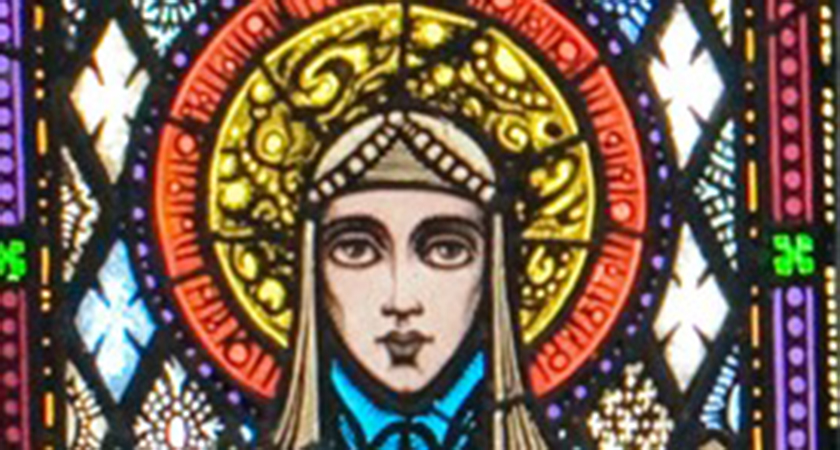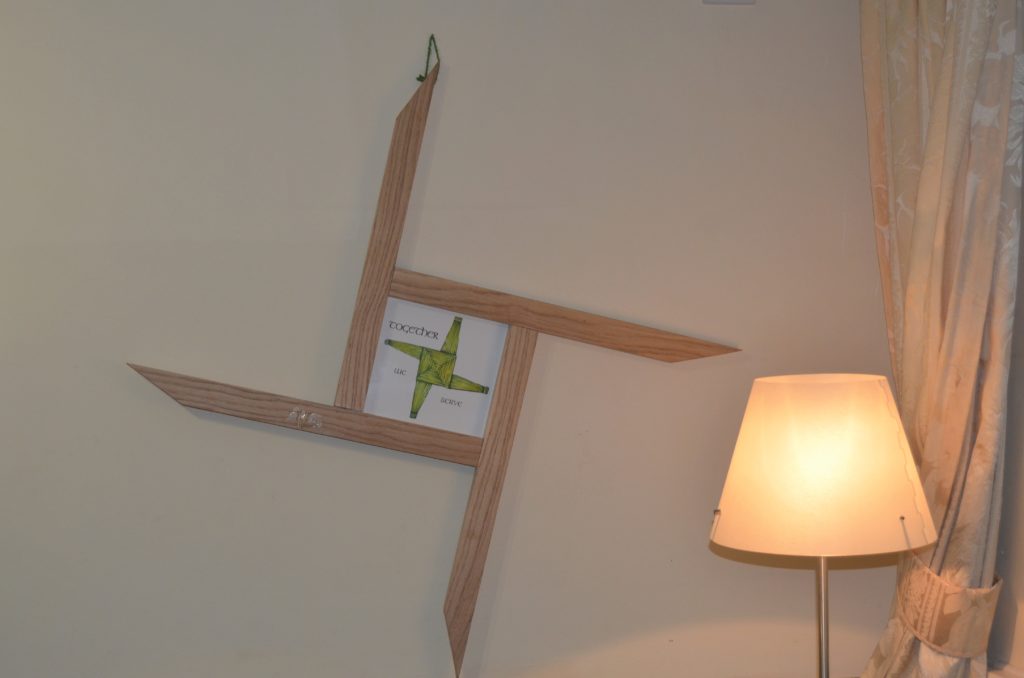TODAY IS St Brigid's Day, generally one of the most hopeful days of the year in normal times, and none more so than this year.
St Brigid's Day, which lands on 1 February each year, marks the first day of spring in the Gaelic calendar, and the beginning of the end of the cold, dark days experienced throughout the winter.
Held midway between the Winter and Spring Equinox, St Brigid's Day has been celebrated by the Irish for centuries-- before Ireland was a Christian country, it is believed to have celebrated the pagan goddess Brigid, and was also known as Imbolc, one of four Gaelic seasonal festivals, the other three being Bealtaine, Lughnasadh and Samhain.
But who exactly was St Brigid, why do the Irish celebrate St Brigid's Day and how is the day traditionally celebrated? Read ahead to find out...
Who was St Brigid?
 St Brigid is the female patron saint of Ireland
St Brigid is the female patron saint of IrelandSt Brigid is one of Ireland's three Patron Saints, along with St Patrick and St Colmcille, and is the only woman patron saint.
Brigid, or Bríd as she is known in the Irish language, had humble beginnings; born into slavery in Dundalk in the year 451, she is known to have helped spread Christianity in Ireland thanks to the many miracles attributed to her.
In fact, she was so prominent in Ireland's early Christianity that she is believed to have been Ireland's first-- and only-- female bishop.
Brigid was born to one of Ireland's first Christians, a woman who had apparently been baptized by Saint Patrick himself, and a wealthy pagan father-- after being born into slavery, she was sold back to her father to become his servant.
But Brigid showed signs of generosity, compassion and holness form a young age-- she enraged her father by constantly giving away his riches to those in need, and he set out to sell her to the King of Leinster.
The King, who was himself a Christian, recognised her holiness however, and ordered her father to free her from servitude.
She would go on to found several monasteries and a convent in County Kildare, with the legend going that the town of Kildare was built around this convent.
What miracles did Saint Brigid perform?
Saint Brigid gained prominence as a devout Christian and miracle-worker throughout her life, with many converting to Christianity thanks to her incredible feats-- including her power to turn bathwater into beer.
But while the transformation of water into beer certainly made her popular, it was far from her only miracle.
St Brigid was also a fierce protector of women, with many legends depicting her of saving innocent women from death, assault or being framed, and even, on one occasion, healing two girls' muteness.
One miracle attributed to Saint Brigid which would shock some Catholics today was when she performed a form of blessed abortion-- a nun who 'failed in her vow of chastity' had fallen pregnant . The story goes that Brigid blessed the woman's womb, and the foetus disappeared "without coming to birth and without pain".
 Brigid - from pagan goddess to Christian saint (Picture: iiStock)
Brigid - from pagan goddess to Christian saint (Picture: iiStock)Brigid herself swore a life of chastity, promising her virginity to God-- this is said to have angered the men. One man is said to have told her that the beautiful eye within her head "would be betrothed to a man though you like it or not"-- with that, Brigid pulled out her own eye.
She then predicted that the man who had called out to her would suffer both his eyes bursting in his head-- this happened immediately.
Incredibly, when Brigid took her vows of chastity, her own missing eye returned to her as though it had never been lost.
But the most famous miracle attributed to Saint Brigid, and the one most-often told on Lá Fhéile Bríd, is how she secured the land for which she went on to build a convent.
According to the legend, Saint Brigid met with the King of Leinster and asked for land, stating that the place where she stood was the perfect place for a convent.
The King was patronising of Brigid, laughed at her and refused; Brigid prayed to God, asking him to soften the King's heart, and God spoke back to her.
Brigid then asked the King if he would gift her as much land as her cloak would cover.
Laughing at Brigid's small cloak, the King agreed; but when Brigid's four sisters took the cloak and began turning in circles with it, it grew and spread in all directions, covering many acres of land until it almost covered the whole province of Leinster.
The King then believed in God's power and became a Christian-- and gifted Brigid enough land for her convent.
How do Irish people celebrate Saint Brigid's Day?
 A Saint Brigid's Cross made by Gerry Molumby
A Saint Brigid's Cross made by Gerry MolumbyIreland has celebrated Saint Brigid's Day with a number of firmly-held traditions-- despite Brigid living close to 1500 years ago, many of these traditions are still observed today.
The most famous of these traditions are the making of the Saint Brigid's Cross, a unique cross made from fresh rushes or reeds which children are taught how to make in school.
Traditionally, before Saint Brigid's Day these crosses are made in schools, communities and private home across Ireland, before they are brought to the church on 1 February to be blessed.
The crosses are then hung in people's homes, where they are believed to bring good luck and prevent fire and hunger of those inside. The crosses hang for a year, until new Saint Brigid's Crosses are created the next year-- the old ones are then burned in the fire.
On the eve of Saint Brigid's Day, households across Ireland leave some clothing outside of their homes in the hope that it will be blessed by Saint Brigid.
These items of clothing can include a cloak or shawl of some sort to reflect Brigid's miracle with the cloak in Kildare. It is said that the clothes which are left outside on Saint Brigid's Eve would then be imbued with healing powers, and should be wrapped around a sick or injured person or animal.

